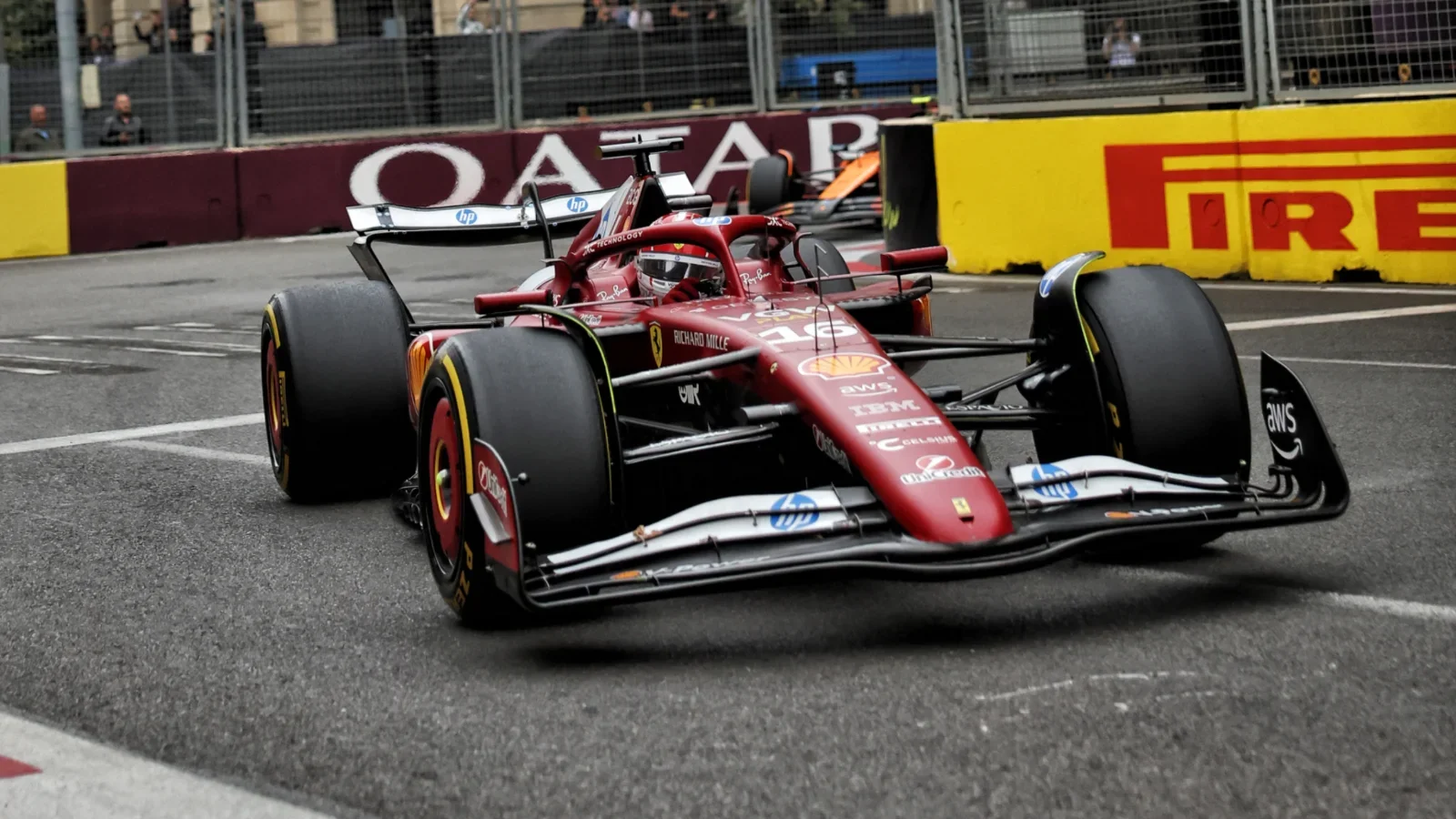Ahead of the Singapore Grand Prix at the Marina Bay Circuit, Charles Leclerc has responded to a significant update in pitlane regulations introduced by Formula 1‘s governing body, the FIA. The change, which involves increasing the pitlane speed limit from 60km/h to 80km/h, aims to encourage more strategic variety during the race and comes as the F1 season approaches its final stages with two triple-header events remaining.
Leclerc’s Perspective on the Updated Pitlane Speed Limit
The new rule allowing drivers to travel faster through the pitlane is expected to reduce the time lost during pit stops, making strategies that involve two stops more feasible. Leclerc noted that this adjustment could alter how teams approach tire changes and overall race tactics.
“I think this is a good thing, because it makes a two-stop strategy more viable,”
he explained. This increase in speed may allow drivers to take advantage of fresher tires more effectively, potentially narrowing gaps created during pit phases.
Despite this potential shift, Leclerc emphasized that overtaking remains difficult on the Marina Bay Circuit, meaning maintaining track position still holds paramount importance. He stated,
“However, considering how difficult it is to overtake here, I think track position is still the key factor. So we will need to check if this is really a variable to consider.”
This cautious outlook reflects the challenges inherent to the Singapore race, where passing opportunities are scarce due to the street circuit’s layout.
Heat Conditions Become a Factor in Singapore
The FIA has classified this year’s Singapore Grand Prix as the first Formula 1 ‘heat hazard’ event, given the forecasted race day temperature of 31 degrees Celsius combined with the city’s high humidity levels. This designation allows drivers the option to wear new cooling vests during the race, a driver safety innovation that has been trialed throughout the current season.

Drivers who decide against using the cooling vest system will need to add an equivalent weight to their cars to eliminate any unfair advantage. Reflecting on this development, Leclerc said,
“We have tested this system and it’s great to know we are free to use it. That said, I don’t get the impression it’s any hotter than in previous years, so I’m not sure if I will use it or not.”
This measured response suggests he remains undecided on whether the additional cooling will be necessary under race conditions.
Driver Safety Concerns Following Previous Heat Experiences
The introduction of the cooling vest option follows growing concerns about driver health in extreme temperatures, prompted by issues encountered during the 2023 Qatar Grand Prix. That event saw several drivers suffering from dehydration and other heat-related ailments; Esteban Ocon reportedly vomited during the race at Losail, while then-Williams driver Logan Sargeant was forced to retire due to severe discomfort.
Though last year’s Singapore GP also presented heat exhaustion challenges, they were less severe than those in Qatar. Without air conditioning in F1 cars and with drivers seated close to engine components inside tightly enclosed cockpits, temperatures inside the car can reach over 50 degrees Celsius during races. These conditions place considerable physical strain on drivers, making heat management equipment an important consideration for this weekend’s event.
Singapore Grand Prix’s Role and the Season’s Final Push
The Singapore Grand Prix represents the last of Formula 1’s standalone races this season before the schedule concludes with two triple-header race weekends. The Marina Bay Circuit’s unique characteristics, including its humid tropical environment and narrow street layout, continue to present a distinct set of challenges for teams and drivers alike.
With changes such as the raised pitlane speed limit and the heat hazard protocol, this year’s Singapore race could see new tactical approaches from teams aiming to maximize their point haul in the crucial closing phase of the championship. Leclerc’s cautious optimism about the pitlane rule indicates that while strategic innovations are welcome, traditional factors like track position will still heavily influence race outcomes.
As Formula 1 progresses through its final races, developments in both regulations and driver equipment will continue to shape how competitions unfold, underscoring the sport’s ongoing balance between technical evolution and on-track performance.
Arriving and adjusting 🇸🇬 pic.twitter.com/dZaTEEmmQg
— Scuderia Ferrari HP (@ScuderiaFerrari) October 2, 2025
